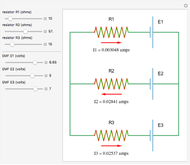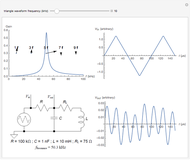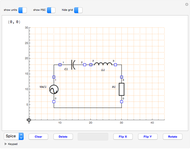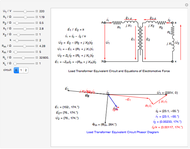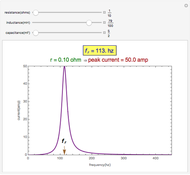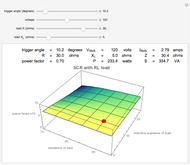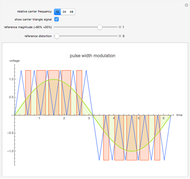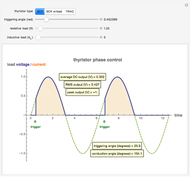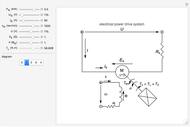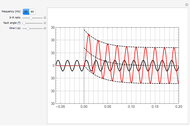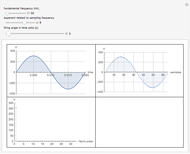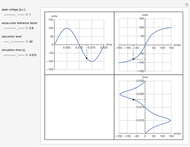Time Evolution of a Short Circuit Current

Requires a Wolfram Notebook System
Interact on desktop, mobile and cloud with the free Wolfram Player or other Wolfram Language products.
When a short circuit occurs in a power system, the time evolution of the fault current depends mainly on the system's  -
- (reactance to resistance) ratio and on the fault occurrence angle (measured relative to the system's voltage) [1].
(reactance to resistance) ratio and on the fault occurrence angle (measured relative to the system's voltage) [1].
Contributed by: GISENER (March 2013)
Team: Diego M. Ferreyra and Raúl A. Beinotti.
Open content licensed under CC BY-NC-SA
Snapshots
Details
The  -
- ratio ranges from almost 0 (an ideal purely resistive fault) to 25 (corresponding to an impedance angle of 87.7º, an almost purely inductive fault). You can vary the fault angle between 0º and 90º relative to the voltage.
ratio ranges from almost 0 (an ideal purely resistive fault) to 25 (corresponding to an impedance angle of 87.7º, an almost purely inductive fault). You can vary the fault angle between 0º and 90º relative to the voltage.
Reference
[1] Richard Roeper, Short Circuit Currents in Three-Phase Systems, 2nd ed., Berlin: Siemens Aktiengesellschaft, 1985.
Permanent Citation








